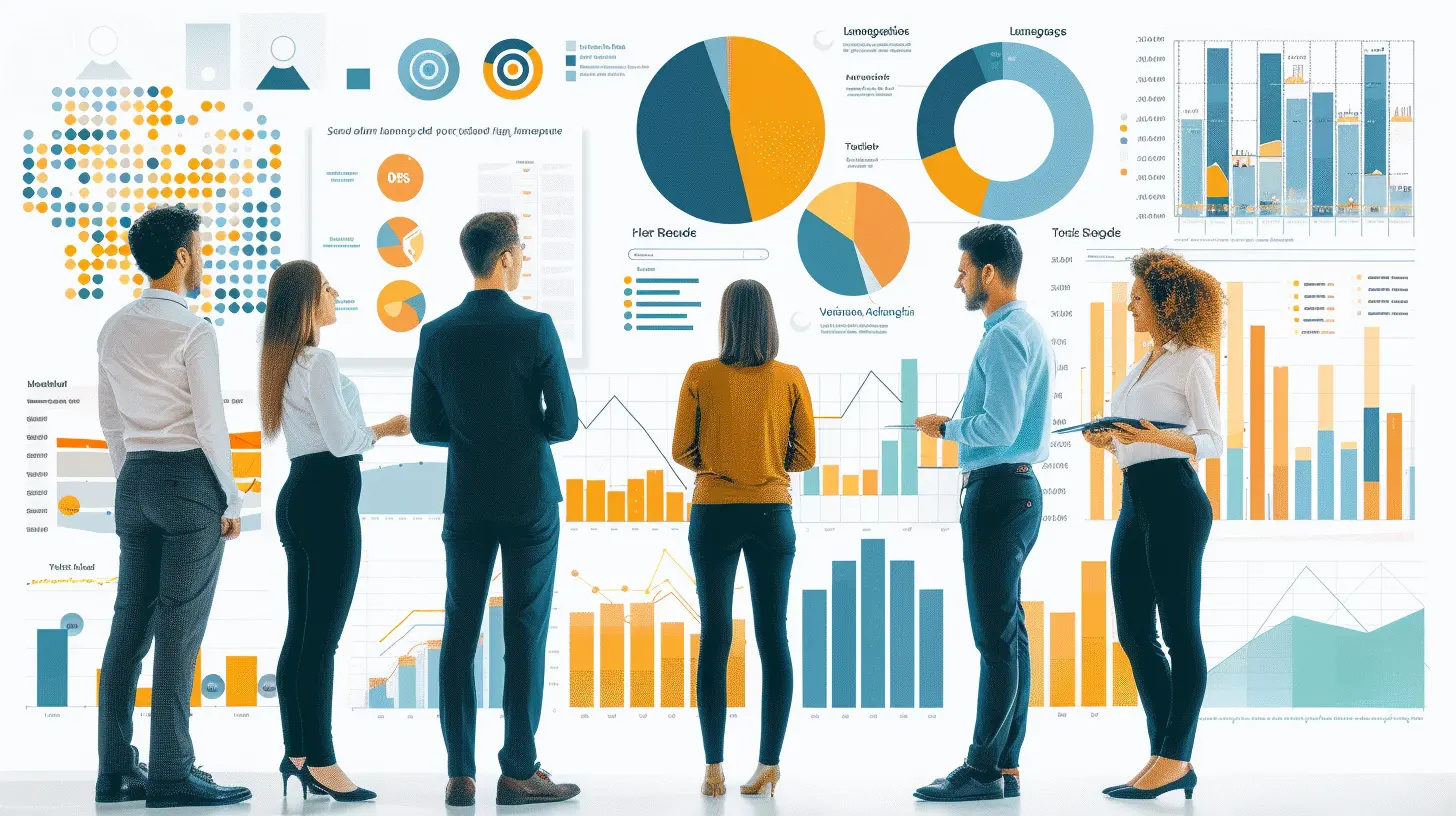Leveraging Data Analytics to Improve HR Decision Making
15 June 2025
Let’s face it—HR has changed. Gone are the days when human resources only meant payroll, hiring forms, or organizing team lunches. Today, HR is at the center of driving business success. And what’s pushing this shift? You guessed it—data analytics.
Data is the new gold. And when it comes to human resources, tapping into data helps organizations understand their workforce better than ever. We're talking about gaining insights into employee engagement, turnover, productivity, hiring patterns, and lots more.
Sounds powerful, right? Let’s dive into how you can leverage data analytics to improve HR decision-making and make your HR department not just functional—but phenomenal.
Why HR and Data Analytics Make a Perfect Pair
First, let’s break it down. What do we really mean when we say “HR data analytics”? It’s more than just spreadsheets and charts. It’s about using data (numbers, patterns, trends) to make informed HR decisions instead of relying on gut feeling alone.Think of it like GPS for HR. Instead of steering your strategy through trial and error, you're using real-time maps to guide your way—that’s data analytics in action.
Now, why does this matter? Because people are complex, and when you're making decisions that impact careers and company culture, you want to get it right.
The Types of HR Data You Should Be Tracking
Before we go any further, let’s talk about what kind of data you’re actually looking at. Here's a quick list of key HR metrics worth tracking:- Turnover Rates – Who’s leaving and why?
- Employee Engagement Scores – Are your people truly into their work?
- Time-to-Hire – How quickly can you fill positions?
- Absenteeism – Are sick days dragging your team down?
- Training and Development Data – Is your investment in upskilling paying off?
- Diversity Metrics – How inclusive is your team?
- Performance Ratings – Who’s crushing their goals?
These aren't just numbers for the sake of numbers. When analyzed correctly, they tell a story—a story that can shape major HR decisions.
How Data Analytics Transforms HR Decision Making
Alright, let’s get practical. How exactly does data analytics improve HR decisions? Let’s go through some real-world examples.1. Smarter Hiring
Hiring the wrong person can cost a business both time and money. But with data analytics, you can predict which candidates are most likely to succeed in a given role.By analyzing past hiring data—like which hires stayed the longest or performed the best—you can spot patterns like a pro. Maybe it turns out that candidates with certain certifications or from particular backgrounds have better success rates. That’s gold during recruitment.
2. Predicting Employee Turnover
What if you could tell in advance which employees were likely to leave in the next few months? With predictive analytics, you can.By analyzing engagement scores, tenure, promotion history, and even the time between promotions, HR teams can identify at-risk employees and act before it’s too late. It's like having an early warning system in your retention strategy.
3. Personalizing Employee Experience
Everyone wants to feel valued, right? Data helps you tailor experiences for employees instead of treating them like one-size-fits-all. Maybe your younger team members prefer more flexible work arrangements, or your senior employees want robust retirement plans.Analytics helps spot what matters to different groups, so HR can offer what really counts.
4. Improving Training and Development
Instead of guessing which trainings are working, use data to measure impact. Are employees who completed a certain course performing better? Are they sticking around longer? If a training program doesn’t move the needle—it’s time to pivot.5. Diversity and Inclusion Initiatives
Want to walk the talk on diversity, equity, and inclusion? Data gives you an honest view.You can analyze hiring trends, promotion rates, pay equity, and more through the lens of gender, ethnicity, age, and disability. Numbers don't lie—and they can show where you’re shining and where you’re... well, not.
Common Tools for HR Data Analytics
So, how do you actually carry this out? Here are a few tools you might already be using—or should consider bringing into your HR strategy:- HRIS Platforms – Tools like Workday, BambooHR, and ADP come with built-in analytics dashboards.
- Survey Tools – Platforms like Culture Amp or Officevibe help track employee engagement and feedback in real time.
- People Analytics Tools – Think Visier, Lattice, or Gusto. They're made specifically for turning HR data into clear insights.
- Data Visualization Software – Tableau and Power BI help make sense of complex data through easy-to-digest visuals.
The key is not just having the tools—but using them meaningfully. A fancy dashboard means nothing if no one’s looking at it.
Challenges You Might Face (and How to Beat Them)
Let’s keep it real—leveraging analytics for HR isn’t all sunshine and rainbows. You’ll hit roadblocks. But don’t worry, they’re manageable.Data Overload
Too much data can leave you stuck. The fix? Focus! Decide what goals matter most—like improving retention or speeding up hiring—and analyze metrics tied to those goals.Resistance to Change
There will always be someone saying, “But we’ve always done it this way!” Counter this by showing the value of data. Share small wins. Show how analytics helped reduce turnover or improved hiring efficiency.Data Privacy Concerns
Handling employee information means handling it with care. Use anonymized data where possible and ensure your tech stack complies with privacy laws like GDPR or HIPAA.Tips to Start Using HR Analytics Today
Ready to hop on the analytics train? Here are some quick wins to get started without feeling overwhelmed:1. Start Small – Pick one area like recruitment or turnover and dig into the numbers.
2. Set Clear Goals – Know what you want to measure and why. “Improve engagement” is vague. “Increase engagement scores by 10% in 6 months” is better.
3. Get Leadership Buy-In – Show how HR analytics ties into broader business goals. When you talk about ROI, heads turn.
4. Train the Team – Make sure your HR team knows how to interpret data. A little training can go a long way.
5. Measure and Adjust – Analytics is not one-and-done. Keep reviewing and adjusting based on what the data says. It’s more of a GPS than a stone tablet.
The Future of HR Lies in the Numbers
Data doesn’t replace the human in human resources—but it definitely levels up your game.HR is becoming more strategic because organizations are realizing that people are their biggest asset. If you can use data to hire better, engage more deeply, and retain top talent—why wouldn’t you?
So if you’re still making HR decisions based purely on instinct, it’s time to hit pause and plug into data. Because when HR meets analytics, magic happens.
Final Thoughts
Leveraging data analytics in HR isn’t just a cool thing to do—it’s becoming necessary. Whether you’re a small business or a multinational company, decisions driven by data are smarter, sharper, and ultimately more human.And remember, data doesn’t have to be intimidating. Start with what you have, stay curious, and let the numbers guide you toward better HR choices. Because in the end, better decisions mean happier employees—and a stronger business.
all images in this post were generated using AI tools
Category:
Human ResourcesAuthor:

Rosa Gilbert
Discussion
rate this article
2 comments
Talia Barker
Unlock hidden insights: data analytics transforms HR decisions in unexpected ways.
June 17, 2025 at 12:26 PM

Rosa Gilbert
Absolutely! Data analytics not only enhances decision-making but also uncovers patterns that can lead to innovative HR strategies and improved employee engagement.
Zarenith Clayton
Data analytics isn’t just a luxury; it’s a necessity for modern HR. Embrace the power of data to transform decision-making, enhance employee engagement, and drive organizational success. Stop relying on gut instincts—make informed choices that propel your business forward.
June 17, 2025 at 4:15 AM

Rosa Gilbert
Thank you for your insightful comment! I completely agree that data analytics is essential for informed HR decision-making and driving organizational success. Embracing data empowers us to enhance employee engagement and make strategic choices.


